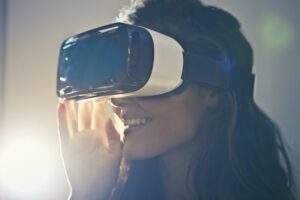IIT Gandhinagar (Indian Institute of Technology, Gandhinagar) has built a VR-based system that can deliver individualized feedback depending on the gaze patterns of individuals who have autism.
Per paediatric neurologists, persons with ASD have a problem looking at a communicator’s face, which is considered a gaze pattern during a conversation. It creates difficulties in understanding social gaze, emotions and affects the maintenance of proper social proximity.
“Be it a school, home, shop or office environment, persons with ASD face difficulties in engaging with social partners since they cannot understand the essence of other’s behavior, emotional preferences while taking part in a collaborative task or teamwork, thereby failing to adapt to their social partners’ needs. These challenges call for alternative technology-assisted solutions that can possibly ensure easily accessible, quantifiable, and individualized services.” – Pradeep Raj K B, Projects’s Main Researcher.
According to Pradeep, the new VR system utilized composite calculations of looking pattern, blink rate, and pupillary dilation to understand the affective state to help offer personalized training and education.
“The system has a facility to give information on one’s affective state that can help even inexperienced therapists or parents, who can modulate their training modules by offering a different level of task difficulty by understanding the individual affective state of a child.” – Pradeep Raj K B.
The new VR system was tested with 18 ASD individuals. By introducing them to the VR system, showed that persons with ASD had improved their communication ability with respect to understanding other’s emotions, proximity, preference with multiple exposures, eye-gaze, as well as improvement in looking pattern.
The system uses a virtual reality-based platform that is integrated with eye-tracking technology. The system also has the capability of providing various difficulty levels based on tasks.
Follow us on LinkedIn
Read other Articles





